Keressétek a Csúcsrajárás alkalmazást a Google Playen!
Keressétek a Csúcsrajárás alkalmazást a Google Playen!
Túráink közül
Grintovec túra
(2007-06-03)
2007.06.11 Egy nehéz és fárasztó túra keretében igáztuk le a Kamnik Alpok legmagasabb csúcsát, a Grintovecet. A leírást itt lehet elolvasni.
(2007-06-03)
2007.06.11 Egy nehéz és fárasztó túra keretében igáztuk le a Kamnik Alpok legmagasabb csúcsát, a Grintovecet. A leírást itt lehet elolvasni.
Mostanában
Sokezer lépés a rákkutatásért - Vértes jótékonysági túra tavasz 20 000 lépés
(2025. június 16.)
Vértesben 20000 lépés
(2025. június 16.)
Vértesben 20000 lépés
Elba-forrás
(2024. október 12.)
Megpróbáltuk felkutatni az Elba forrását a hó alatt, de ratrakkal kellett volna jönnünk
(2024. október 12.)
Megpróbáltuk felkutatni az Elba forrását a hó alatt, de ratrakkal kellett volna jönnünk
Mittagskogel
Magashegyi túra
A leírást készítette: feherb
Idõpont:
2004. május 30.
Indulás: ~10.30 - Unteraichwald
Érkezés: ~20.00 - Unteraichwald
Résztvevõk: feherb, natasa, szabola
Indulás: ~10.30 - Unteraichwald
Érkezés: ~20.00 - Unteraichwald
Résztvevõk: feherb, natasa, szabola
Túraparaméterek
A túra hossza16 km
Szintkülönbség1500 m
ÚtvonalUnteraichwald -> Bertahütte -> Mittagskogel -> Bertahütte -> Unteraichwald
HelyszínKarawankák
Legmagasabb tengerszint feletti magasságMittagskogel - 2142 méter
Idõjárás
Délután idõnként erõsen megnövekedett a gomolyfelhõzet, de emellett sok volt a napsütés és csapadék sem volt.
Európa idôjárása
Magyarázat a térképhez
Magyarázat a térképhez
|
After our hike in Switzerland we gave Natasa a task: buy a turist map of the mountain region of the Karawanken and we would go for a climb there in the summer. She bought the map and we selected the path number 680 with that headed to the peak of Mittagskogel.
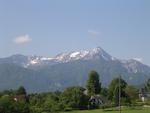
Mittagskogel can be reached from the direction of Slovenia, but the path to the peak is harder. The Slovenian name of the peak is Kepa. The mountain looks like a volcano, its top is nice conical. The mountain can be seen from the A2 highway, and the Worther lake. 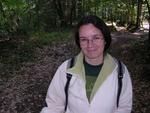

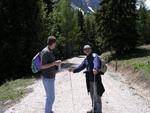
The road wound so wide, that a car would fit on it, but it was so steep that only the nearby hut owners could travel here by their extra special all terrain cars. The tourist path went off the dirt road, and we rose in a pine forest. We had been going for an hour, when I became thristy and I asked for some from the others. They would have had to provide for the water. As it turned out, the water bottle had been left in the car, so we had only a little water and warm, sour tee, but I didn't want that. We would survive somehow or other, I thought. 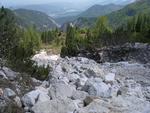
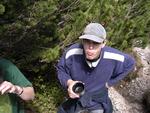
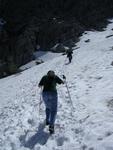
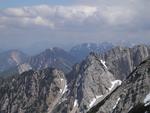
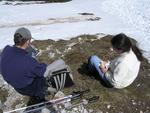

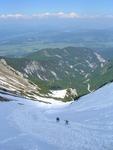
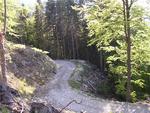
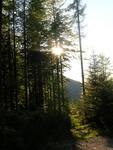
We were the last guests in the hütte. We hurried up a little, and we went on the dirt road easily, and we made very good pictures of Mittagskogel in the sunset. The knees of Natasa were in pain, because goind down was not easy, although snow helped the advance. On the last slope she could only stumble. Szabola made some pictures from a creek in sunset light.
Zöld zóna
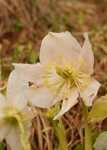 |






